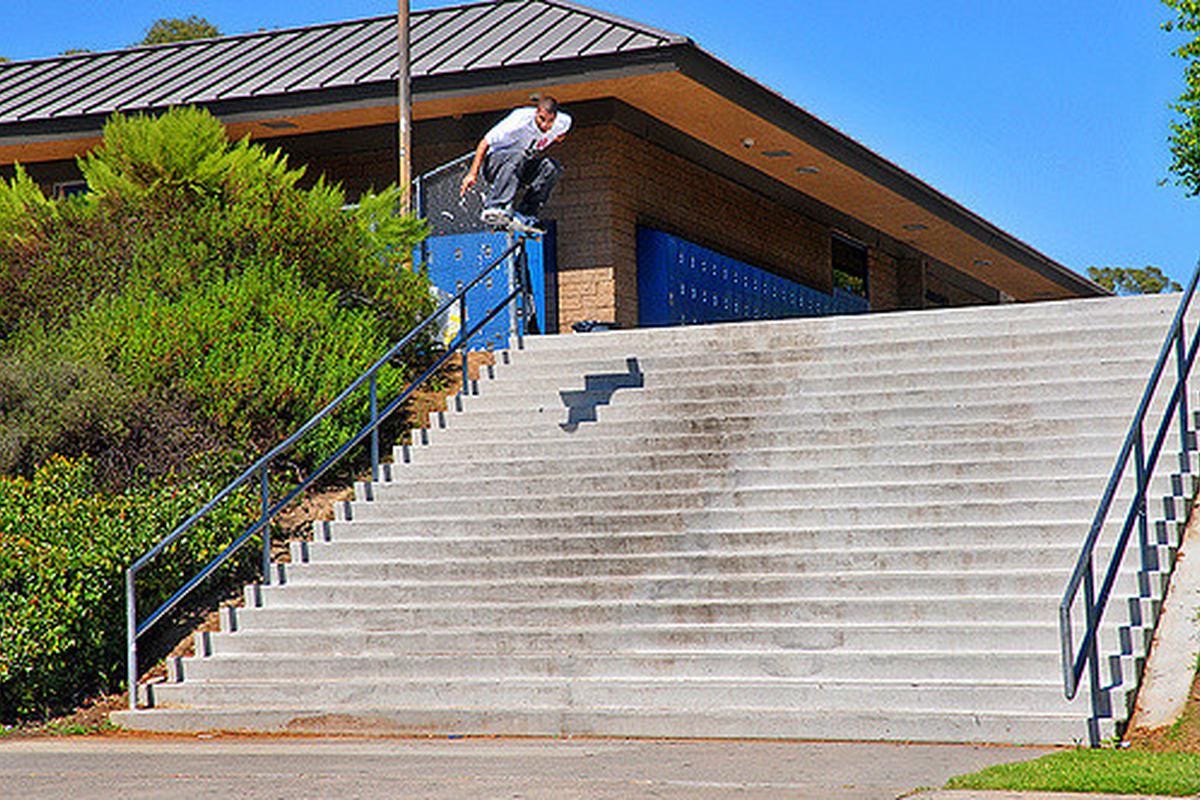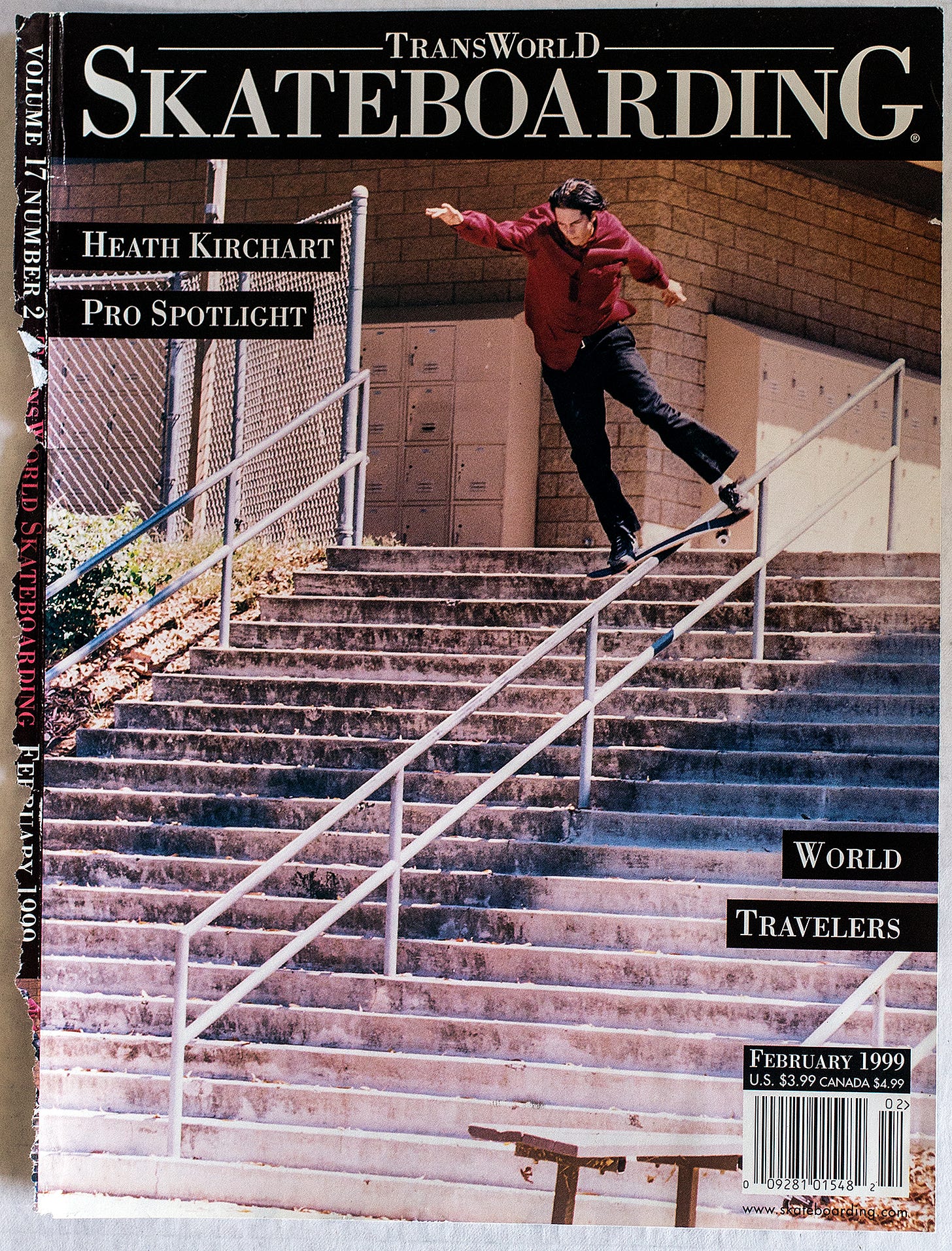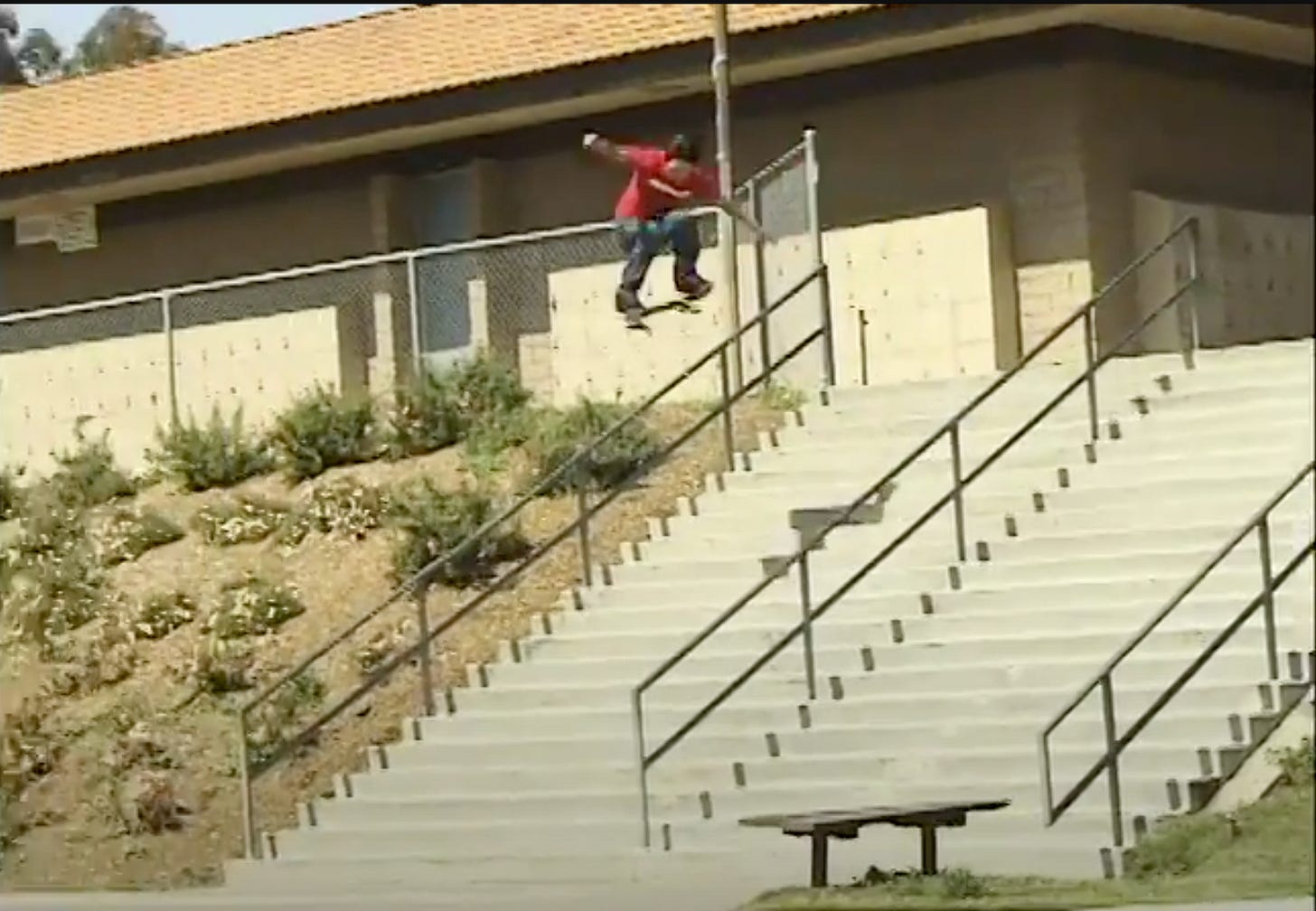How Skateboarding Taught Me to Think Creatively: A Love Letter
Three lessons from a childhood obsession that rewired how I see the world and make things today
The Day I Got Hooked
In 7th grade, I watched a kid named Matt Tokuno do an ollie on a skateboard and it blew my mind. It was after school and I’d gone to the park near his house to hang out with some friends. Matt came over to say hi. But he didn’t walk over, he skated over in an effortlessly cool way.
The next thing I knew, Matt was showing us how high he could ollie (a trick where you jump with the skateboard popping up under you). He laid his board down, crouched, and popped about a foot off the ground. My jaw dropped. I’d never seen someone do a trick in real life. My only reference point for skateboarding was Tony Hawk Pro Skater, and that was not particularly realistic.
So when Matt started explaining how he learned to ollie, I was hooked. I needed to learn how to skateboard.
I begged my parents for a board for months. That Christmas, my persistence paid off: a fully set-up “complete” skateboard was waiting under the tree. I hit up my new friend Matt, and we were off to the streets.
Fast Forward
The next few months were predictable. When I get into something, I go deep. Skateboarding was no different. I skated every day, read skate magazines, watched skate videos, listened to whatever music skaters were listening to. I threw myself headfirst into a tribe of rebels.
I wasn’t amazing at skateboarding, but I got better. I learned to ollie consistently. I landed my first kickflips and heelflips. Some of my friends were way better than me, but I didn’t care. I loved the rhythm of progress and being outside with something bigger than myself.
Meanwhile, my dad hated it. He thought I was falling in with the wrong crowd. He worried I was neglecting school. And to be fair, I probably was. I pushed back more at home. I wanted freedom, and skateboarding became my excuse to chase it.
Looking back, he wasn’t wrong to worry. But I think he missed what was happening underneath.
I loved skateboarding because I loved what it was doing to the way I saw the world. Every sidewalk, every curb, every bit of curve on the asphalt…I wondered about what might be possible on a skateboard. I would sit in the car while my parents drove somewhere, stare out the window, and wonder about what tricks might be possible. Skateboarding was rewiring how I thought. At the time, I didn’t realize it. But now I know, it was my first real education in creativity.
What Skateboarding Was Really Teaching Me
Those early years of skating taught me lessons I still come back to today. And to explain a few of them, there’s no better place to start than one of skateboarding’s most legendary spots: El Toro.
El Toro was a 20-stair set at a high school in Southern California. It became mythical in skate culture. It was for the few crazy enough to take it on. It no longer exists, but its legacy lives on because it captured something deeper than physical difficulty.
El Toro is a stage for the kinds of creative lessons I didn’t have words for as a kid. Here are three things skateboarding (and El Toro) taught me about what it really means to create.
Creativity Starts With Seeing What’s Possible
Heath Kirchart was the first skater to land any trick down El Toro. He slid down the middle rail and the legend of El Toro was born.
But before Heath landed that trick—where did the idea even come from? Maybe he’d heard about El Toro from friends. Maybe he’d driven past it and couldn’t stop thinking about it. Maybe he stood at the top of those 20 stairs one day and quietly wondered, what if I tried something here?
At some point, Heath must’ve pictured it. He must’ve seen himself rolling up with speed, locking into that frontside lipslide, gliding down the rail, and landing clean at the bottom. He visualized the whole thing. That image probably looped in his head until he couldn’t ignore it anymore.
That’s how creativity often begins. You catch a glimpse of something that isn’t real yet, but feels like it could be. You wonder why something couldn’t be done. And then start imagining how it might be. That shift in perspective is the seed.
It begins as a picture in your mind. It’s clear enough to chase, but blurry enough to feel just out of reach.
Creativity Means Taking the First Step
Heath probably wasn’t the only skater who looked at El Toro and wondered what might be possible. But unlike everyone else, he didn’t stop at wondering. He turned his curiosity into action. One day, he grabbed his board, rallied some friends, and decided to try. That single decision—to move from imagination to effort—is what made him different. That’s what made it real.
Every creative act begins the same way. You picture something that doesn’t exist yet, and then you take a step toward it. It doesn’t have to be the right step. You don’t need to know the full path. What matters is that you take that step, to make your intention real outside of your head. You manifest something into existence by the sheer fact that you are no longer just thinking about it, you are doing something about it too. That’s when your creativity starts to move.
It becomes a picture outside your mind, as you start sketching. Line by line, stroke by stroke.
Creativity Requires Persistence, Even When the Path Gets Hard
After Heath, Don Nguyen was the first skater to land a trick down El Toro without grinding down the rail. As he recalls it, Don actually landed an ollie on his first try in 2001. But the photographer botched the shot so he had to come back to redo it. Don describes the second set of attempts, and how much pain he felt from falling. His wrist kept getting cut up from the impact on each failed effort. But he persisted, and got his picture perfect shot.
Walking the path on your creative journey is never straightforward. You may have started with a destination in mind. You may have taken those first steps thinking you were pointed towards that destination. But the reality is that there’s no way to know if those first steps were right. The creative journey is one where the path unfolds as you walk it. You must explore because by definition, there is a gap between what you know when you start and the destination you want to end up at. No one has walked this path before so each step reveals new bits of information.
We don’t admit how painful this part of creativity is. In Don’s case, it wasn’t just physical pain. What’s often worse is the mental agony and suffering where you start wondering if you’re lost. These are the questions littered with self-doubt on creative journeys:
“Can I even do this?”
“Is it worth pursuing?”
“If it’s so painful, maybe I’m not meant to see it through?”
I believe the creative journey requires a form of necessary suffering. Just because you are wandering, doesn’t mean you’re lost. Like many of life’s deeper truths, this part is a paradox: when you’re most unsure of the path, that’s exactly when you need to remember why you started. When self-doubt is loudest, belief has to speak louder.
It requires holding onto the picture—redrawing it when needed, smudged and torn—because some visions are too important to abandon.
A Love Letter to My First Skateboard
Not every creative act ends with success. Some skaters went to El Toro and didn’t land their tricks. But it doesn’t matter because the act is the journey of creation, not just the outcome. When I look back at my days skateboarding, I am filled with nostalgia and gratitude for these memories. I’ll close out with a love letter revealing the most important lesson I learned from skateboarding
To my first skateboard:
When I stepped foot on you I thought you were just a plank of wood on 4 wheels. Like so many other toys, I thought I’d get bored of you in some months and move on. I’ll admit I underestimated you.
You were deceivingly complex and infuriatingly difficult. Every time I thought I was getting the hang of you, you showed me your depth by humbling me. You tortured me, physically and mentally. You worried my parents, terrified dogs, and pissed off more than a few small business owners. You made me deeply question what I was doing.
I didn’t see it then, but I see it now. You were teaching me how to think. You taught me how to see the world through a different lens. You taught me how I could learn to be creative. You showed me that the bottleneck was never ability, it was self-belief. You showed me how wonder, agency, and the strength to persist can lead to great things.
These are lessons I carry with me. Thank you for reminding me that creativity lives in all of us. We just need to believe we’re capable of it.








Love it. Skateboarding taught me a lot of things too. I also know so many people who got into photography or film or web design through it...it's so cool